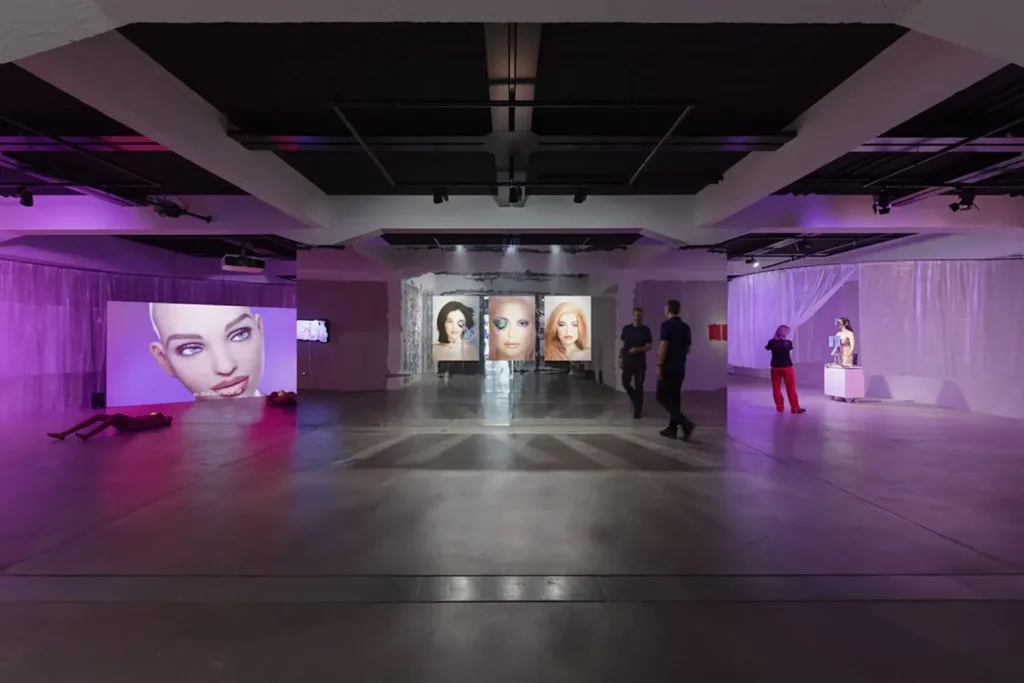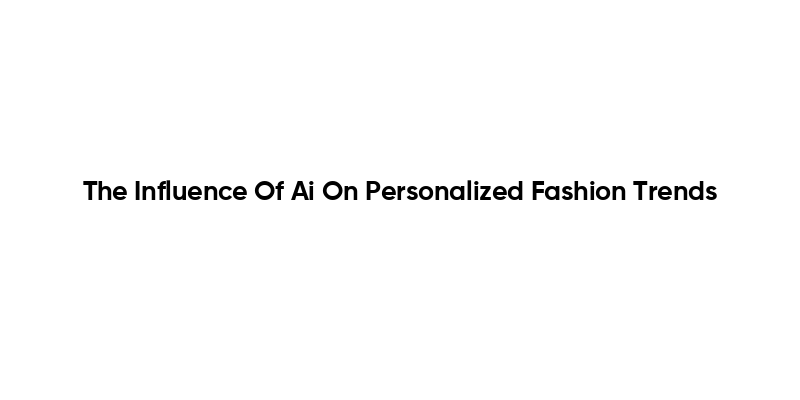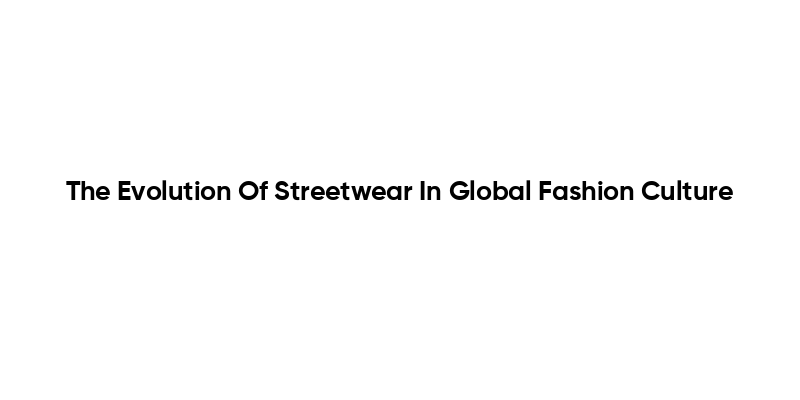The upcoming Virtual Beauty exhibition at Somerset House promises to be a groundbreaking exploration of how technology intersects with our perceptions of beauty in today’s digital landscape. Featuring over 20 international artists, the exhibition delves into complex themes such as AI and beauty, emphasizing the profound impact of social media on self-image and the phenomenon of Snapchat dysmorphia. This innovative showcase challenges visitors to reflect on how art and technology contemporaneously reshape our understanding of beauty in the digital age. By analyzing the interplay between virtual identities and real-world expectations, this exhibition provides a thought-provoking lens on the modern quest for perfection. As we navigate a society increasingly influenced by curated online personas, Virtual Beauty invites us to reconsider the true essence of self-representation in a world dominated by screens.
The concept of a digital beauty showcase has arrived, transcending traditional definitions of art and self-expression. This exhibition, aptly named Virtual Beauty, invites attendees to investigate the evolving landscape of aesthetics shaped by modern technology. It merges insights from diverse creators who reflect on the influence of artificial intelligence, social media, and altered realities on personal image and identity. As participants engage with the works presented, they will witness a rich tapestry of artistic expressions that speak to the broader cultural narratives around self-image and beauty norms in the tech-driven era. By presenting these compelling perspectives, the exhibition serves as a gateway to understanding how art and innovative technologies converge to redefine contemporary beauty.
The Intersection of Art and Technology in the Digital Age
As we traverse deeper into the digital age, the intersection of art and technology has become increasingly pronounced, evoking poignant conversations about our self-image. Artists like Qualeasha Wood are scrutinizing how social media platforms have redirected aesthetic values and norms. Through installations and artworks, they invite us to reflect on our identities amidst the relentless flow of digital content. This fusion of art and technology challenges us to reconsider our perceptions of beauty, urging us to question the authenticity of self-representation in a world heavily influenced by artificial intelligence.
In the realm of virtual beauty exhibitions, the role of technology cannot be understated. Events like the upcoming show at Somerset House encapsulate this trend, bringing together diverse artworks that explore themes of digital identity and self-portrayal. By showcasing these artworks, institutions are not merely displaying art; they are facilitating discussions that connect to broader societal issues such as mental health, body image, and the impact of pervasive technology on our lives. This engagement highlights the importance of art as a medium for reflection and transformation in an increasingly digitized world.
Understanding Snapchat Dysmorphia: A Product of Our Times
Snapchat dysmorphia represents a disturbing trend that has emerged in the digital era, where individuals seek surgical enhancements based on filtered images from social media. Coined by plastic surgeons, this term underscores the psychological impact digital platforms have on our self-image. The desire to conform to these AI-enhanced portrayals reflects a collective struggle for validation and beauty, often leading to dissatisfaction with one’s natural appearance. This phenomenon showcases the profound ways technology shapes individual perceptions and raises critical questions about reality versus virtuality in our self-expressions.
Artistic responses to Snapchat dysmorphia further illuminate this issue, as creators like Wood utilize their mediums to comment on the societal pressures stemming from digital platforms. Her work confronts the discomfort surrounding these beauty ideals, revealing the dissonance between individuals’ real selves and the curated versions presented online. These artistic explorations serve as vital commentaries on our obsession with digital perfection and underscore the urgent need for a dialogue about mental health and body acceptance in a world dominated by filters and AI-enhanced representations.
The Role of AI in Redefining Beauty Standards
The advent of artificial intelligence has radically reshaped beauty standards, as algorithms and machine learning influence how we perceive and achieve beauty. Tools that enhance images, create filters, and even redesign faces have normalized certain aesthetics that cater to a homogenized standard of attractiveness. This reality can lead to an overwhelming desire to attain such ideals, prompting individuals to undergo drastic changes to their appearances. The ongoing dialogue surrounding AI in beauty sheds light on its role in not just shaping trends, but also potentially harming mental health and self-esteem.
In the context of art exhibitions like Virtual Beauty, AI’s ability to redefine traditional notions of beauty is being critically examined. Artists are challenging audiences to confront the unattainable ideals perpetuated by technology. The exhibit features works that highlight the juxtaposition of reality and digital perfection, sparking discussions about what beauty truly means in our increasingly AI-driven society. By facilitating these conversations, art becomes a vital platform for reflecting on the implications of changing beauty standards and encourages us to embrace authenticity over conformity.
Cyborg Posthumanism and the Future of Self-Representation
Cyborg posthumanism presents a fascinating framework for understanding the evolving landscape of self-representation in our digital age. As technology melds with the human experience, individuals oscillate between their biological selves and the digital personas they curate online. This hybrid existence brings forth new questions about authenticity and identity, posing challenges to the traditional aesthetics of beauty. Artists like Sin Wai Kin, who incorporate such themes into their works, are at the forefront of this conversation, exploring the nuances of identity formation in a rapidly transforming world.
Through the lens of cyborg posthumanism, the implications of our digital selves extend beyond mere aesthetics; they tap into deeper existential inquiries about humanity’s future. Will our emotional and physical identities continue to morph as technology advances? The artwork presented in exhibitions raises these critical inquiries, compelling audiences to consider the nature of beauty, identity, and selfhood. Such progressive perspectives encourage a re-evaluation of how we might navigate the complexities of modern existence, highlighting the interplay between technology, art, and our evolving sense of self.
Exploring the Psychological Impact of Beauty in the Age of Filters
In a world saturated with digital filters and AI-enhanced images, the psychological effects on individuals cannot be overlooked. The constant comparison to seemingly perfect online personas creates a breeding ground for insecurity and dissatisfaction. Many individuals, particularly young people, grapple with the pressure to adhere to curated beauty standards, often losing sight of personal authenticity in the process. This disconnect between reality and the filtered digital landscape fuels discussions about mental health and societal expectations, necessitating a cultural shift towards embracing natural beauty.
Artistic interpretations of these psychological struggles are crucial in fostering awareness and promoting conversations about self-acceptance. The artworks featured in the Virtual Beauty exhibition serve as conduits for expressing the complexities of navigating beauty ideals in the digital age. By confronting the harsh realities of online life through creative expression, artists enable audiences to engage deeply with their emotions and experiences, potentially leading to greater empathy and understanding in society. This exploration of beauty’s psychological impacts is essential for reshaping how we view ourselves in relation to technology.
Virtual Beauty Exhibitions: Transformative Spaces for Discussion
Virtual beauty exhibitions provide transformative spaces where art meets social commentary, enabling crucial conversations about beauty standards and technology’s role in shaping them. By bringing together diverse artistic expressions that critique and reflect contemporary issues, these exhibitions invite attendees to engage in meaningful dialogue. The significance of events like the Virtual Beauty exhibition at Somerset House lies in their ability to challenge audiences to rethink their perceptions of beauty and the implications of living in a heavily digitalized society.
Moreover, these exhibitions serve as platforms for underrepresented voices in the arts to share their narratives and experiences. Artists exploring themes of identity, race, and gender in the context of beauty underscore the urgency of recognizing diverse perspectives within the broader conversation. By fostering inclusivity and encouraging different viewpoints, virtual exhibitions not only enhance the discourse around beauty but also promote an enriching cultural experience that resonates well beyond the gallery walls.
From Myth to Reality: The Evolution of Beauty Ideals
The evolution of beauty ideals from mythological concepts to contemporary standards highlights the transformative nature of societal perceptions. Historically, beauty has been tied to cultural narratives, often representing ideals that are unattainable for the average person. In today’s digital age, the fusion of technology and beauty aesthetics follows a similar path, perpetuating myths such as the ‘perfect’ body or flawless skin. Art plays a pivotal role in dissecting these myths, challenging viewers to question the validity of these norms that have been commercialized and commodified.
The Virtual Beauty exhibition explores how artistic interpretations can deconstruct and reframe these myths, prompting us to reexamine our relationships with beauty. By addressing historical and contemporary standards, artists encourage audiences to reflect on the influences that shape their perceptions. Such critical explorations not only unveil the nuances of beauty but also provide insights into the societal structures reinforcing these ideals, contributing to a broader understanding of beauty’s evolution and its implications on self-identity.
Navigating the Future: Beauty Norms in an AI-Driven World
As we look towards the future, the convergence of beauty norms and artificial intelligence invites speculation about how these elements will continue to shape our society. In an era of rapid technological advancements, the beauty industry is likely to witness even more profound changes, with AI playing a central role in defining and disseminating beauty standards. The challenge lies in ensuring that these developments do not lead to diminishing individuality or perpetuating harmful stereotypes. Instead, there is an opportunity for technology and art to collaborate in redefining what beauty can embody, promoting diversity and acceptance.
Artists and technologists alike must navigate this landscape thoughtfully, considering the ethical implications of beauty-enhancing technologies. Initiatives within virtual exhibitions focus on raising awareness of these issues, encouraging participants to advocate for beauty standards that celebrate authenticity over conformity. By fostering engagement and discussion, artists can help pave the way for a future where beauty norms evolve in tandem with technological progress, ultimately embracing a more holistic and inclusive view of beauty that resonates across diverse cultures and identities.
The Dynamics of Self-Representation in the Age of Social Media
Self-representation has transformed dramatically in the age of social media, with individuals increasingly curating their digital identities through carefully crafted images and narratives. This new form of presenting oneself is often heavily influenced by trends pushed by platforms like Instagram and Snapchat, leading to the rise of aesthetic standards that become benchmarks for attractiveness. As audiences consume an endless stream of idealized images, the pressure to conform to these standards grows, often overshadowing genuine self-expression.
Art that engages with the dynamics of self-representation provides critical commentary on this phenomenon, urging viewers to consider the implications of their online activities. By exploring themes of identity, perception, and the impact of technology on our daily lives, exhibitions can shift the focus from superficial ideals to meaningful representations of self. Conversations arising from these artistic explorations serve as reminders that true beauty lies in authenticity, encouraging individuals to embrace their unique identities beyond the gaze of curated digital perfection.
Frequently Asked Questions
What is the significance of the virtual beauty exhibition at Somerset House?
The virtual beauty exhibition at Somerset House explores how AI, social media, and virtual identities are reshaping perceptions of beauty and self-representation in the digital age, particularly in the context of phenomena like Snapchat dysmorphia.
How does AI influence beauty standards presented in the virtual beauty exhibition?
AI influences beauty standards showcased in the exhibition by setting unrealistic ideals that individuals often feel compelled to emulate, leading to discussions on topics like Snapchat dysmorphia and the pressure of digital self-image.
What artists are featured in the virtual beauty exhibition and their contributions?
The virtual beauty exhibition features over 20 international artists, including Qualeasha Wood, whose works reflect the complexities of self-image in the digital age, blending traditional art forms with modern technology and social media themes.
Can attending the virtual beauty exhibition help understand digital age impacts on beauty?
Yes, attending the virtual beauty exhibition provides insight into how digital advancements and AI are impacting beauty perceptions, highlighting critical discussions about the intersection of art and technology.
What themes related to art and technology are explored in the virtual beauty exhibition?
The themes explored in the virtual beauty exhibition include the concept of virtual beauty as a time marker, the relationship between online and offline personas, and the impact of digital alterations on real-world self-image.
How does the virtual beauty exhibition address the concept of Snapchat dysmorphia?
The virtual beauty exhibition addresses Snapchat dysmorphia by showcasing works that reflect the shift in beauty ideals influenced by AI and digital media, illustrating how individuals alter their appearances based on augmented reality filters.
What role does self-portraiture play in the virtual beauty exhibition?
Self-portraiture plays a crucial role in the virtual beauty exhibition, as many artists use personal narratives and images to explore their identities and the societal pressures of beauty ideals shaped by the digital landscape.
How does the exhibition challenge traditional beauty norms?
The virtual beauty exhibition challenges traditional beauty norms by questioning the validity of AI-influenced ideals and showcasing the diverse interpretations of beauty through innovative art forms and technologies.
Is there a connection between virtual beauty and self-representation in the digital era?
Absolutely, the virtual beauty exhibition emphasizes the connection between virtual beauty and self-representation, illustrating how online platforms shape individuals’ perceptions of themselves and the pressures associated with curating their digital identities.
How can I visit the virtual beauty exhibition at Somerset House?
To visit the virtual beauty exhibition at Somerset House, check their official website for ticket availability and opening hours. The exhibition will be open from July 23 to September 28.
| Key Points |
|---|
| Digital Age and Beauty Standards: Our perception of beauty has shifted dramatically due to technology, especially through photo-editing apps and social media. |
| Snapchat Dysmorphia: Coined by plastic surgeons, it describes the trend of people wanting surgeries to look like their AI-enhanced selfies rather than real-life celebrities. |
| Virtual Beauty Exhibition: Opening on July 23, it features over 20 international artists to explore the convergence of AI, social media, and beauty perceptions. |
| Cultural Reflection: Though rooted in centuries-old techniques (e.g., Jacquard loom), the exhibition examines the evolution of beauty from classical ideals to modern AI influences. |
| Art and Identity: Works by artists like Qualeasha Wood highlight the personal impact of digital culture, especially for marginalized identities. |
| Evolution of Cyborgs: The term cyborg is becoming outdated as technology continues to influence human identity and physical transformation. |
| Future of AI: The exhibition explores the potential of AI in shaping human identity and the societal implications of merging technology with beauty standards. |
Summary
The upcoming Virtual Beauty Exhibition at Somerset House marks a critical point in our understanding of beauty in the digital age. As technology continues to redefine our self-image, this exhibition serves as a poignant reminder of the tensions between reality and AI-enhanced ideals. Through the works of various artists, it illustrates how social media and virtual identities shape and challenge contemporary beauty norms. In exploring these themes, the Virtual Beauty Exhibition not only highlights our evolving relationship with technology but also invites reflection on individual identity in an increasingly digitized world.



